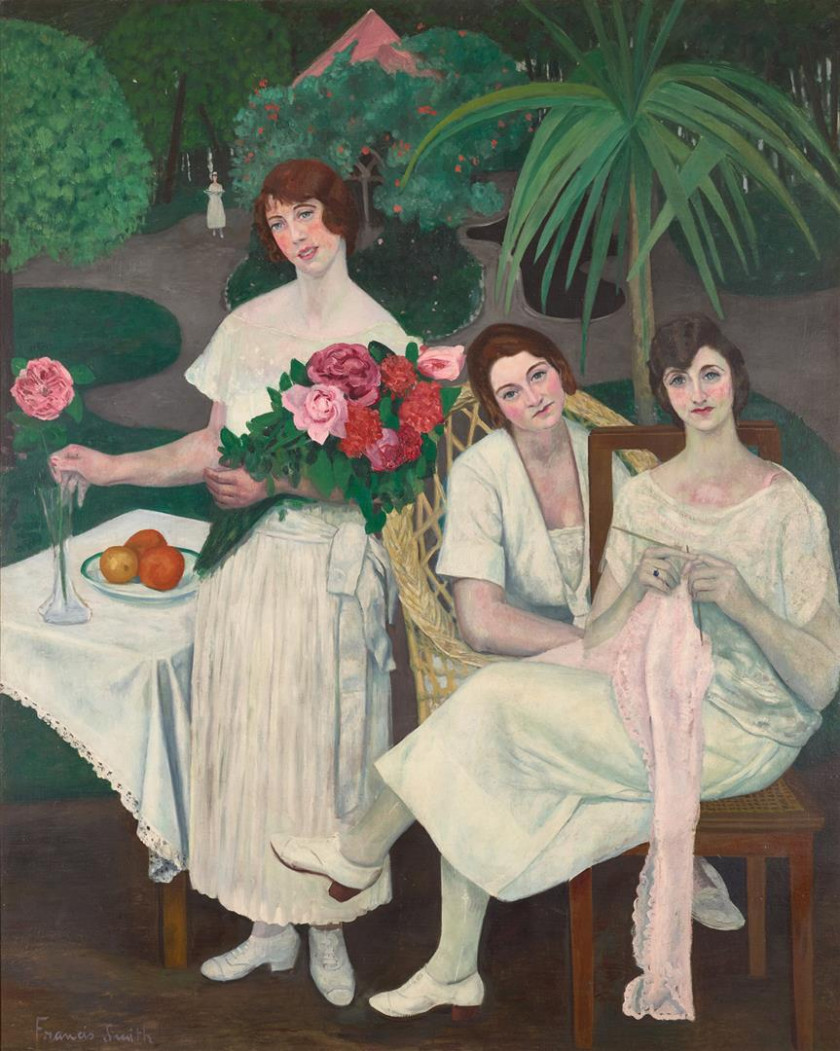As Três Graças [The Three Graces]
painting


c. 1930
Oil on canvas
162,5 x 129 cm
Although undated, this painting by Francis Smith (also known as Women in the Garden) points to his portrait production around 1915–1920 (according to historian Jorge Gonçalves da Costa), and was very likely created after 1917, the year in which the artist and his wife moved to a house in Montmartre that had a garden, at the back of which Smith had his studio (Costa, 2021, p. 36).
Unrelated to the mythological story of the Three Graces (beyond the current title, which is clearly a literary evocation), the composition depicts three young women in a green corner of the artist’s garden.
According to researcher Jorge Gonçalves da Costa, author of the most comprehensive study to date on Smith (Francis Smith 1881–1961. In Search of Lost Time, MNAC/Tinta da China, 2021), the work portrays three of the four daughters of Thaddeus Natanson (1868–1951). However, members of Smith’s family claim that the figures are the daughters of Aleksander Natanson (1866–1936), emphasizing that the young woman shown on the right side of the composition, knitting, is the French architect and designer Bolette Natanson (1892–1936).
The brothers Thaddeus, Aleksander, and Ludwik-Alfred Natanson, Jewish intellectuals of Polish origin who settled in France early on, were central cultural figures in Paris during those years. Co-founders of the famous French artistic and literary journal Revue Blanche, published between 1889 and 1903—and featuring contributions from prominent names in French artistic and literary circles, such as Marcel Proust—the commissioning of this portrait testifies to Smith’s connection with the French intelligentsia.
The assertion of private space in this painting is underscored by the presence of a table covered with a lace-edged cloth, on which rests a plate of fruit (a reference to still life) and an elegant vase into which a young woman is placing a camellia. The approach, from the background, of another female figure (possibly a maid, judging by the white cap) carrying a tray, reinforces the notion of domesticity.
These three young women, living a moment of tranquility, do not seek to seduce the viewer (reinforcing the idea that the title is merely evocative of the scholarly tradition). Their serene presence is emphasized by the expressions on their faces and the posture of their bodies, as well as by the light emanating from the various whites of their dresses—luminous breaks in the dense, lush greens that frame them and lead the viewer’s gaze toward the warm colors of the flowers and fruit. A triangular composition guides the eye from the roof of the garden shelter to one of the young women’s heads and the camellia placed in the vase, then to the flower bouquet and the heads of the other two figures. The warm patch of fruit draws the gaze downward, to the base of the composition, revealing—in the relaxed poses—a suspended moment in time, lived by these self-assured women in a garden.
Emília Ferreira